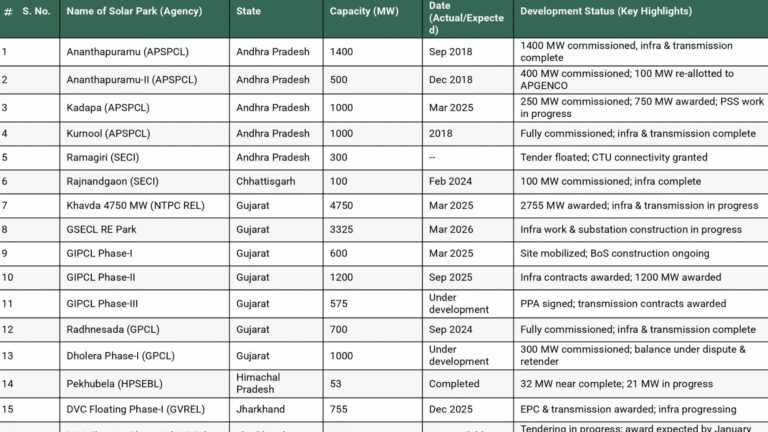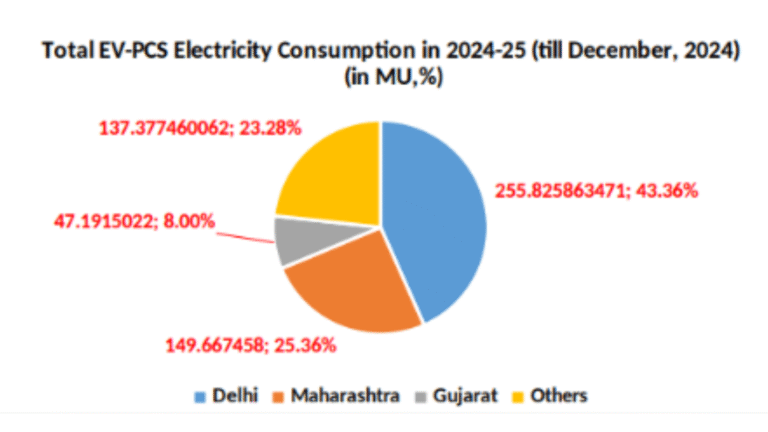Status of solar parks and UMREPPs across India as of March 2025
This table shows the current status of 55 solar parks and Ultra Mega Renewable Energy Power Projects (UMREPPs) across 15 states in India. It captures capacity, expected or actual completion dates, and key development milestones such as transmission progress, land acquisition, and commissioning status. Abbreviations used: APGENCO: Andhra Pradesh Power Generation Corporation APSPCL: Andhra Pradesh Solar Power Corporation Private Limited CEA: Central Electricity Authority CTU: Central Transmission Utility CTUIL: Central Transmission Utility of India Limited…


